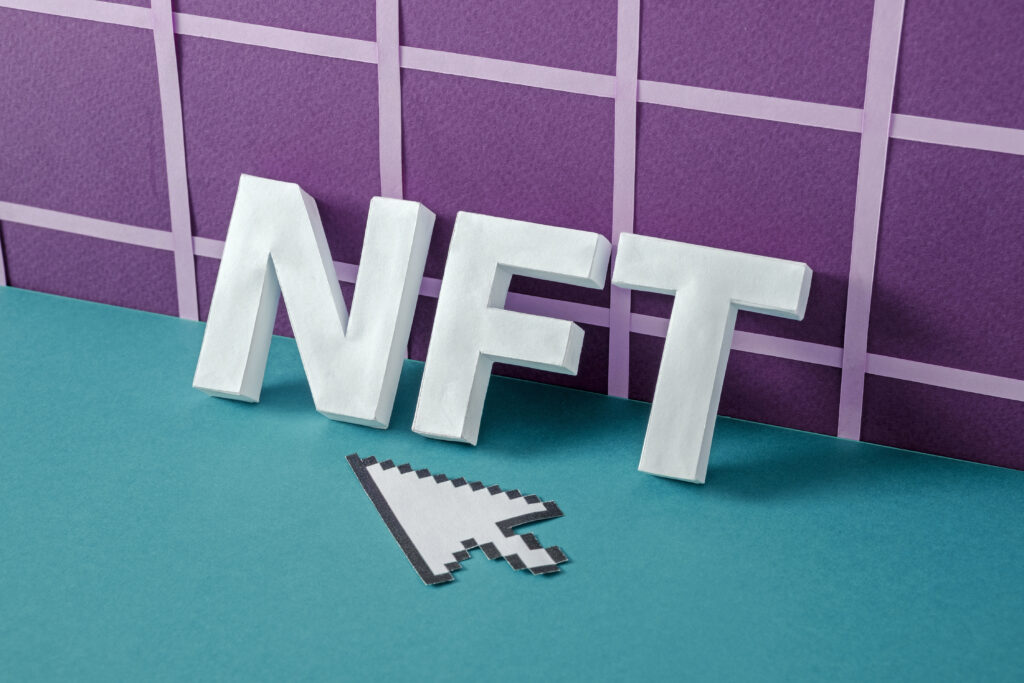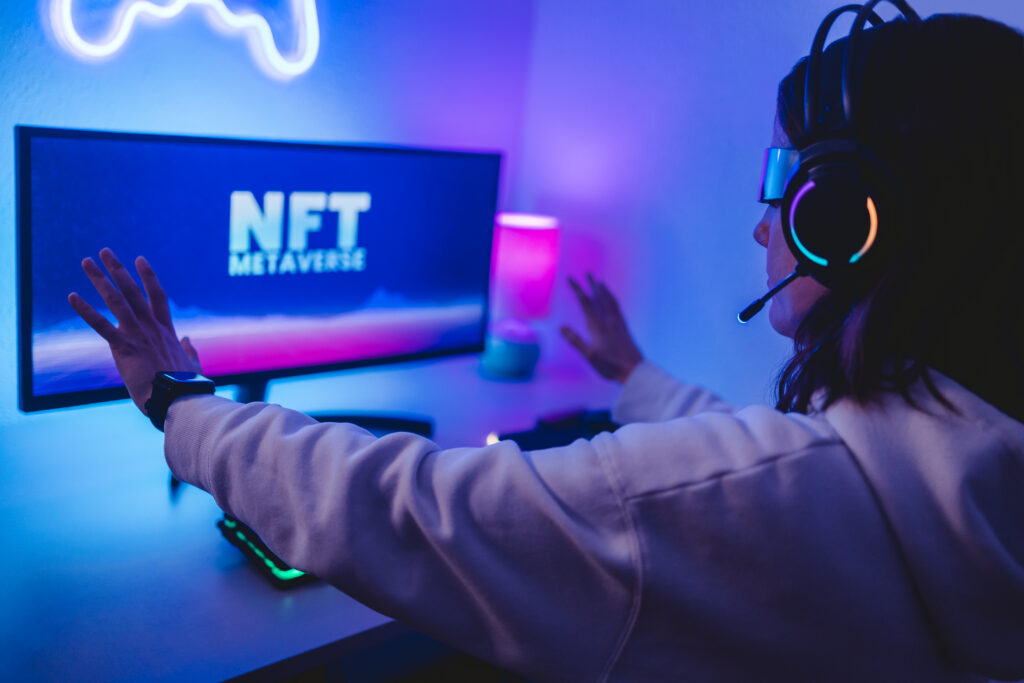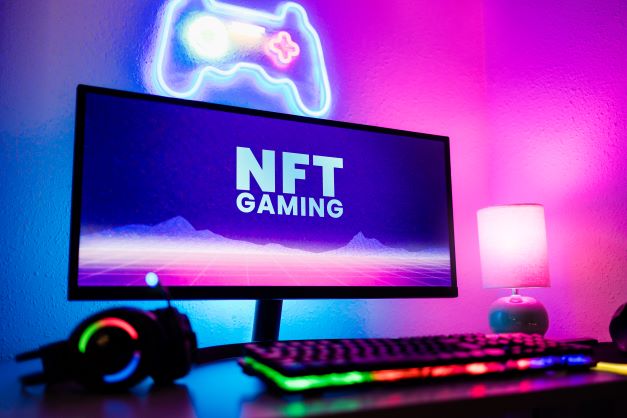As an inventor and IP consultant, it’s fascinating to see how the gaming industry is rapidly evolving and adapting to new technologies. A recent patent application titled “NFT Framework for Transferring and Using Digital Assets Between Game Platforms” by Sony Corp is a perfect example of this trend.
The patent application proposes a system that allows the transfer and use of non-fungible tokens (NFTs) between different gaming platforms. In essence, the system allows users to perform tasks within a computer simulation, call it a console game, associate those tasks with a specific NFT (say, beating a boss, getting a high score, being placed in a leaderboard, getting the fastest time in a racing game, etc.), and then use that NFT as a digital asset within another simulation or platform. This framework could potentially revolutionize the gaming industry by creating a more seamless and integrated gaming experience for users.
The Problem with In-Game Achievements

This seeks to solve a problem the gaming industry has had for decades. How to reward players in a meaningful way outside of the games sandbox. Even the most addictive games lose interest with players over time. The achievements of the best players of those games is ultimately lost to memory. They won all the best gear, cosmetic items, and rankings, but the enter the next game, the next platform, like everyone else: square one.
Worse, this problem has created a grey market for stocked account sales. Some people have time but no money, others have money but no time. The latter wants to play games without the grind, the former is happy to grind all day and night for the right buyer. So far the gaming companies have been cut out of this market, instead resorting to flimsy terms of service agreements to quash account that are repeated bought and sold, to little effect.
If game achievements could be tied to NFT, by contrast, there could be a healthy legal trade of achievements that a console company, like Sony, could lord over.
The Sony NFT Patent’s Claim
The claim quoted from the patent application highlights the key components of the proposed system. The system comprises at least one computer medium that is not a transitory signal and that includes instructions executable by at least one processor to identify a task performed by a first end-user entity. It then associates the task with a first NFT that represents a digital asset comprising at least one video game skill applicable by at least a first simulation to a first simulation implement type and applicable by at least a second simulation to a second simulation implement type different from the first simulation implement type. Finally, it provides the first NFT to the first end-user entity.
Non-fungible tokens (NFTs), for those not yet familiar, are unique digital assets that are stored on a blockchain, which is a decentralized digital ledger that records transactions. Unlike fungible tokens like cryptocurrencies, NFTs cannot be exchanged for an equivalent item or broken down into smaller units. Each NFT is one-of-a-kind and represents ownership of a specific digital asset, such as artwork, music, or collectibles. NFTs allow creators to monetize their digital creations and give buyers a way to own and trade unique digital assets.
The proposed system has several potential benefits for both gaming companies and users. For gaming companies, it could create new revenue streams by allowing them to monetize digital assets and potentially create a secondary market for these assets. For users, it could provide a more integrated and personalized gaming experience by allowing them to transfer their assets and skills between different gaming platforms seamlessly.
Problems with Blockchain in the Gaming Sphere
However, with any new technology, there are also potential challenges and drawbacks. One of the main concerns with NFTs is the environmental impact of their creation and trading. NFTs rely on blockchain technology, which is notoriously energy-intensive and can have a significant carbon footprint. Another potential challenge is the risk of fraud and scams, which are already a major issue in the NFT market.
Sony’s NFT Application is the Tip of the Iceberg
Invent Around the NFT Application
In terms of patent strategy, there are several ways competitors could invent around or on top of this patent application.

For example, awarding other digital assets: One potential avenue would be to focus on developing alternative systems that allow for the transfer and use of digital assets between gaming platforms without relying on NFTs or blockchain technology. Think metaverse: you could award virtual real estate, virtual collectibles, avatars, or achievement tokens that have nothing to do with NFTs, but could be just as secure and saleable in the right market.
Invent On Top of the NFT Application
Another approach could be to build on this patent application by developing new features or functionality that build on the proposed system.
In terms of improvements to the patent application, one potential area for refinement would be to focus on addressing the environmental impact of NFTs and blockchain technology. This could involve exploring alternative technologies or developing ways to reduce the energy consumption associated with NFT creation and trading.
Another potential area for improvement could be to focus on enhancing the security and authenticity of NFTs to reduce the risk of fraud and scams. The user could secure their NFTs using biometric data that was relevant to gaming technology, e.g. voiceprint technology, unique gestures with the gaming controller, a certain combination of character items and skills, etc.
Furthermore, making these digital assets easier to buy and sell is going to be crucial for the success over other grey market transactions. Create a high tech auctioning system for buying and selling NFTs generated in-game that includes smart contracts, trusted escrow wallets for digital currency, integration with game engines such as Unity or Unreal for more seamless asset transfer, bid tracking and analytics to help the user determine supply and demand of NFT classes, payment options in a variety of traditional and cryptocurrencies (as well as potential a purchasing parity with in-game currency).
In conclusion the proposed NFT framework by Sony Corp has the potential to revolutionize the gaming industry and create new opportunities for gaming companies and users. As an inventor and IP consultant, it’s exciting to see how the gaming industry is evolving and adapting to new technologies, and I look forward to seeing how this patent application develops and how competitors respond to it.

